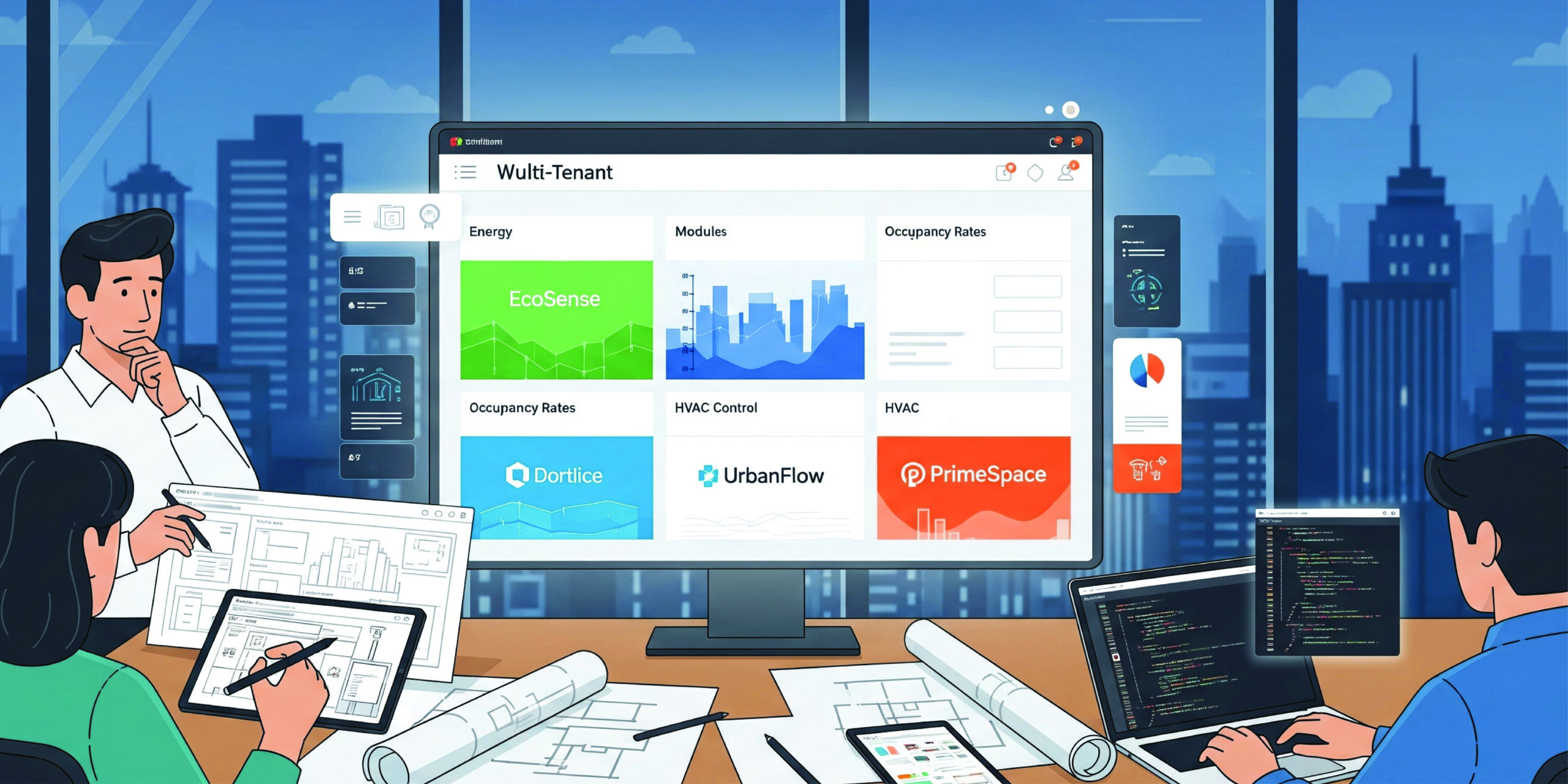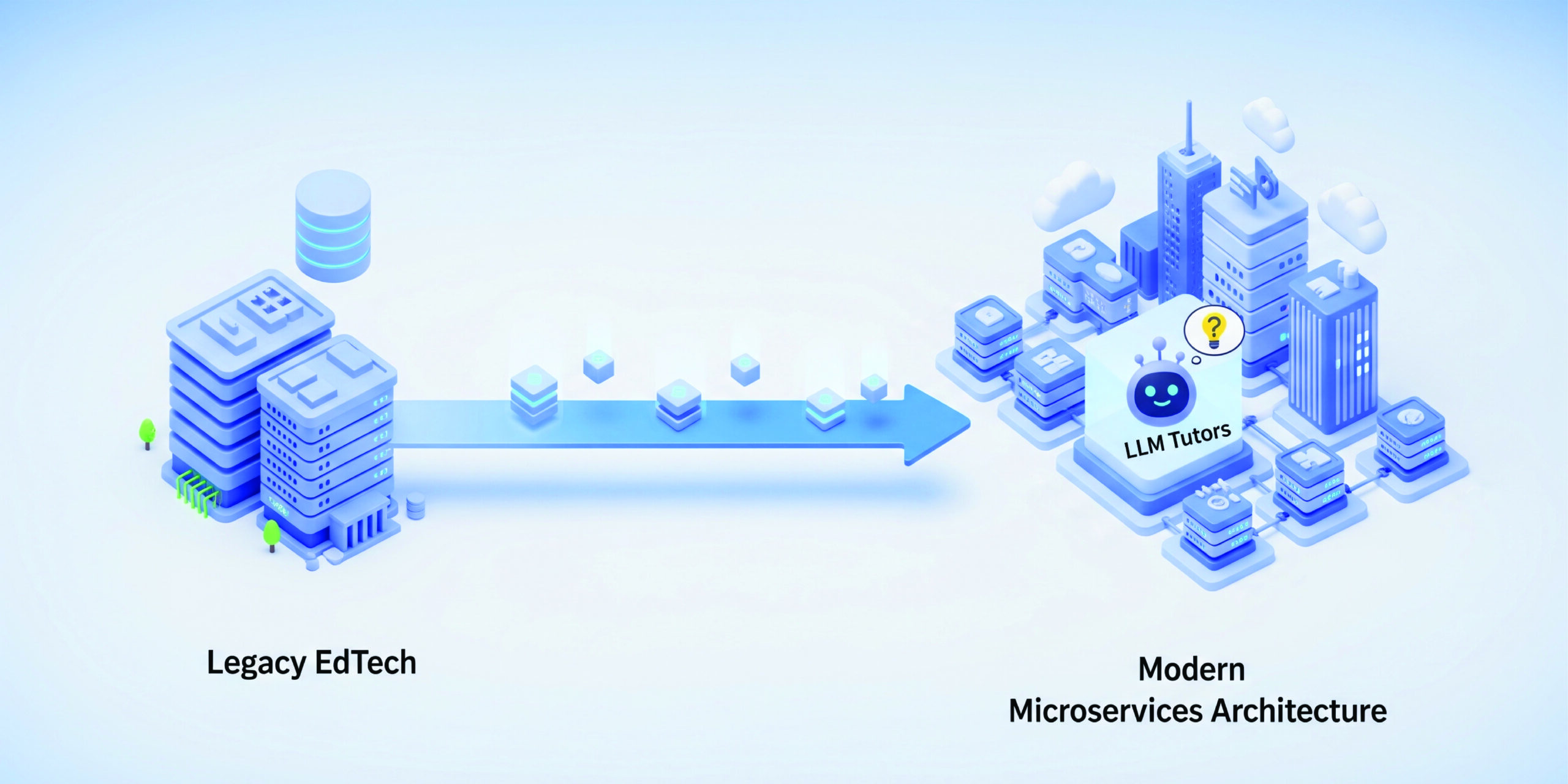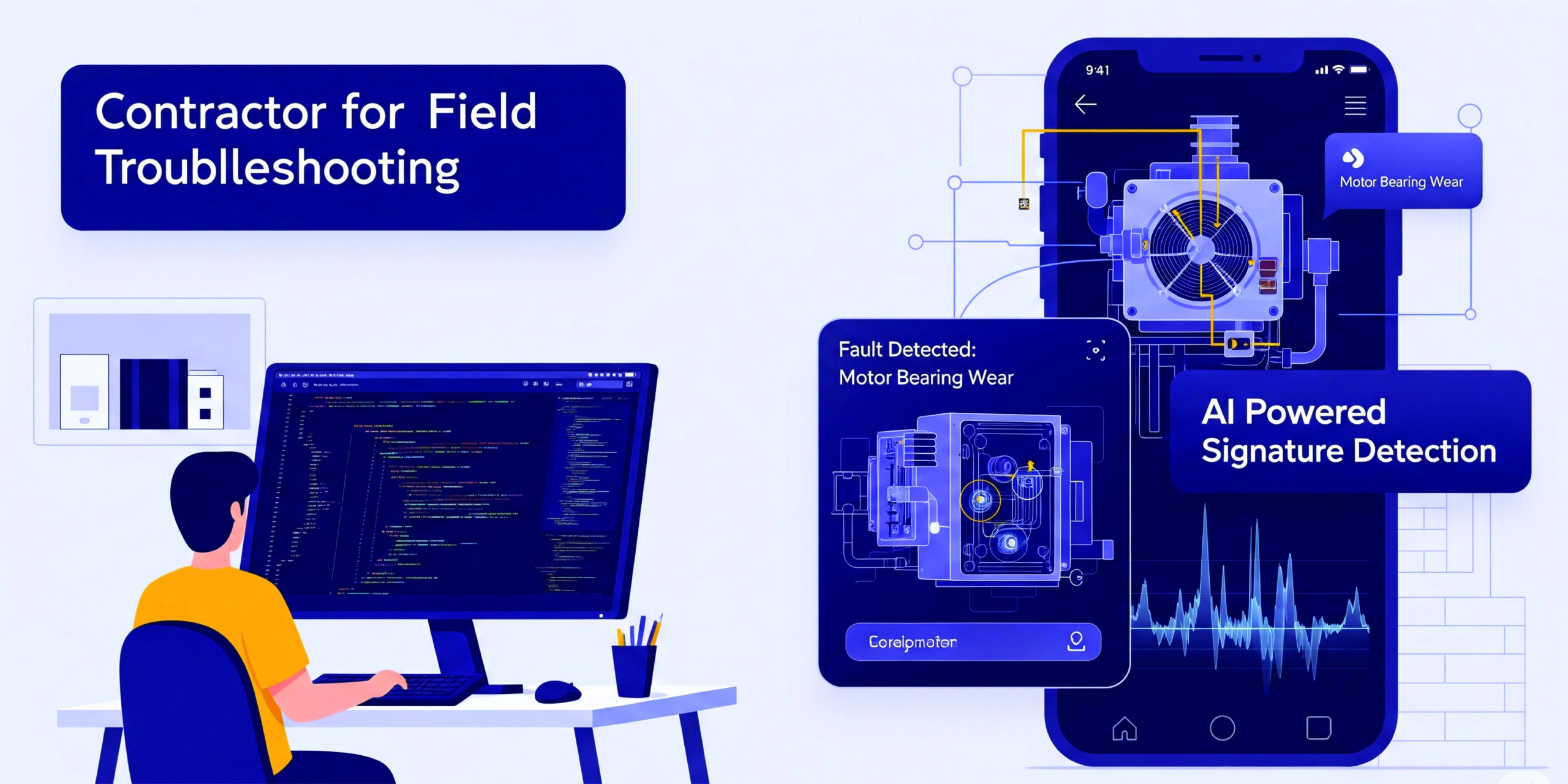I. Introduction: The UX Challenge of Multi-Tenant Smart Platforms
Smart building platforms today serve a diverse range of customers — real estate operators, facility managers, device OEMs — each demanding a branded, tailored digital experience. While the core services (device telemetry, user management, analytics) remain the same, the expectation is that every tenant gets their own version of the platform.
A common but problematic approach is to fork the dashboard codebase or create per-tenant deployments. This doesn’t scale. Engineering becomes a bottleneck, onboarding slows down, and maintenance costs balloon.
To solve this, we engineered a cloud-native, white-labeled, multi-tenant dashboard — one that could serve multiple clients from a single codebase, while still enabling deep customization in branding, layout, roles, and data visibility.
II. Business & Functional Requirements
To guide the architecture, we worked closely with stakeholders from product, sales, engineering, and customer success. The functional goals came down to:
- Multi-Tenant Core: All tenants run on the same backend, sharing infrastructure but with logical isolation.
- Visual Branding: Each customer’s dashboard should reflect their identity — logos, themes, custom domains.
- Flexible Layouts: Dashboards should be modular and rearranged to fit each tenant’s operational focus.
- Role-Based Access: Support for complex access control hierarchies (e.g., Admin, Manager, Technician).
- No-Code Tenant Onboarding: New customers should be launched by the business team, not engineering.
III. High-Level Architecture
🖥️ Frontend Stack
- ReactJS with Tailwind CSS: Enables rapid component development and style consistency.
- Theming Engine: Injects styles dynamically based on metadata or subdomain detection.
🔌 Backend APIs
- Node.js or Spring Boot: Exposes tenant-scoped API endpoints behind API Gateway.
- REST + GraphQL Mix: Used where flexibility in data fetching was required (e.g., dynamic widgets).
☁️ Cloud Infrastructure
We implemented a flexible cloud setup to allow scalable and isolated operations:
- Hosting:
- AWS Amplify for seamless CI/CD and domain management.
- Azure Static Web Apps for static site hosting with enterprise integration.
- Authentication:
- Amazon Cognito or Azure AD B2C for identity and multi-tenant session management.
- Storage:
- S3 / Azure Blob: Used for branding assets, layout configs.
- DynamoDB / CosmosDB: Used for storing tenant metadata, RBAC matrices, layout definitions.
IV. Tenant Isolation & Customization Strategy
Key to scaling this framework was supporting per-tenant customization without per-tenant deployments.
🎨 Branding Isolation
- Each tenant’s logo, theme, and domain are managed via a centralized metadata store.
- A dynamic theming engine applies CSS-in-JS styling at runtime based on subdomain or token claims.
🔐 Data Isolation
- Every API request carries a tenant ID, enforced at both middleware and database layers.
- Logical partitions and role-based policies prevent any cross-tenant access.
🧱 Layout & Widget Customization
- A widget library powers modular dashboards — tenants choose what they need.
- Per-tenant layout is stored as structured metadata and rendered at runtime.
V. AI-Enabled Smart Dashboard Widgets
To differentiate the offering and deliver proactive insights, we added AI-powered widgets that operate independently per tenant.
🧠 Examples:
- Energy Anomaly Detection: ML models flag unexpected spikes in energy usage based on tenant history.
- Occupancy Prediction: Forecasts footfall using time-series models.
- Predictive HVAC Load Modeling: Uses external weather + device performance to guide HVAC energy use.
These models are served via containerized inference endpoints and visualized through tenant-specific widgets — enabling insights without overwhelming users.
VI. Identity & Access Control
We implemented strong tenant-aware identity controls to ensure security and compliance.
- AuthN:
- Cognito (AWS) or Azure AD B2C configured in multi-tenant mode
- Supports custom SSO integrations for enterprise tenants
- AuthZ:
- Tenant-specific RBAC configuration: what widgets, actions, or data each role can access
- Audit Logs:
- Per-tenant logs for user actions, login attempts, config changes
VII. Admin Console for Tenant Management
To eliminate engineering friction during customer onboarding, we built a fully self-service Admin Console:
- Upload logo, favicon, and define tenant theme
- Create and manage user roles and access levels
- Select dashboard modules to enable for the tenant
- Trigger automated deployment and provisioning via CI/CD pipelines
This allowed business and onboarding teams to launch new tenants without writing a single line of code.
VIII. Feature Set of the White-Labeled Multi-Tenant Dashboard
Here’s a breakdown of the modular feature set we’ve implemented — giving tenants full flexibility without the need for engineering rework.
🎨 1. Branding & Theming
- Uploadable logos, splash screen, and subdomain-level identity
- Dynamic color/font styling via tenant metadata
- Subdomain or token-triggered theming injection
🧭 2. Dashboard Layout Configuration
- Drag-and-drop dashboard builder (admin-only access)
- Predefined layout templates for quick setup
- Widget visibility toggle per tenant or user role
🧩 3. Smart Widgets (Standard + AI-Driven)
- Standard: Device status, HVAC control, alert center, floor plan view
- AI: Energy anomaly alerts, predictive HVAC, occupancy models
- Configurable visibility and data source per tenant
👥 4. User Management
- Invite-based flows, SSO integration, and self-service password reset
- Per-tenant RBAC with editable role definitions
- Centralized user directory with tenant filters
🛠️ 5. Tenant Admin Console
- Guided tenant onboarding UI with real-time preview
- Role + widget + layout config tools
- Versioned change history and deployment logs
🔐 6. Security & Data Isolation
- JWT-based tenant scoping on all APIs
- Partitioned DB records per tenant
- Fully audit-logged user sessions and admin events
🌍 7. Globalization Support
- Multi-language UI toggle (English, Spanish, French initially)
- Local time rendering per user profile
- Regional compliance banners per tenant (GDPR, CCPA, etc.)
📊 8. Embedded Analytics
- Per-tenant usage statistics
- Widget popularity and session analytics
- Admin-facing alerts for login failures or tenant inactivity
IX. DevOps & CI/CD Automation Strategy
To support rapid onboarding, frequent updates, and consistent tenant experiences, we implemented a modern DevOps pipeline that automates provisioning, configuration, and deployment.
🚀 Frontend CI/CD
- GitHub Actions / Azure DevOps Pipelines: Trigger builds on main or tenant-config branches.
- Amplify / Static Web Apps: Auto-deploy React apps with subdomain routing per tenant.
- Build-Time Theming Injection: For static builds, tenant metadata is injected into environment variables for pre-rendered UI branding.
🧱 Backend CI/CD
- Containerized Services: Node.js and Spring Boot APIs deployed via ECS Fargate or Azure Container Apps.
- API Versioning: Handled via gateway routing to allow backward-compatible widget evolution.
- Secrets Management: Used AWS Secrets Manager / Azure Key Vault to store per-tenant auth endpoints and API tokens.
📦 Tenant Provisioning Automation
- A new tenant triggers:
- Creation of config entries in DynamoDB / CosmosDB
- Branding asset upload to S3 / Blob
- Subdomain provisioning (e.g., tenantX.smartdash.io)
- Role, widget, and layout defaults set via IaC (CDK / Bicep)
🔄 Rollback & Version Control
- Feature toggles enable gradual rollout of new dashboard modules.
- Git version control used to snapshot layout and widget libraries per release.
This setup ensures fast iteration, predictable releases, and safe multi-tenant upgrades — with zero downtime during tenant onboarding.
X. What’s Next
The architecture lays the groundwork for long-term extensibility. Upcoming capabilities include:
- AI-Based Heatmaps: Visualize user interaction and dashboard friction points.
- Tenant Leaderboards: Show anonymized performance benchmarking (“Top 10 Most Efficient Buildings”).
- Internationalization Toolkit: Support RTL languages and per-region time formats.
- Takeaways for OEMs & SaaS Builders
✅ Don’t Build a New Dashboard for Every Customer
Design for metadata-driven white-labeling from day one.
✅ Cloud Services Unlock Scale
AWS Cognito, Azure Static Web Apps, Amplify, and Blob Storage let you scale fast with low overhead.
✅ Modular UI = Fast Time-to-Value
Drag/drop widgets + per-tenant layout = personalization without engineering cycles.
✅ Admin Console Empowers Business Teams
Put onboarding in the hands of sales, onboarding, or partner teams — not developers.
Let us know if you’d like to see a demo or explore how this framework could be adapted for your industry.



